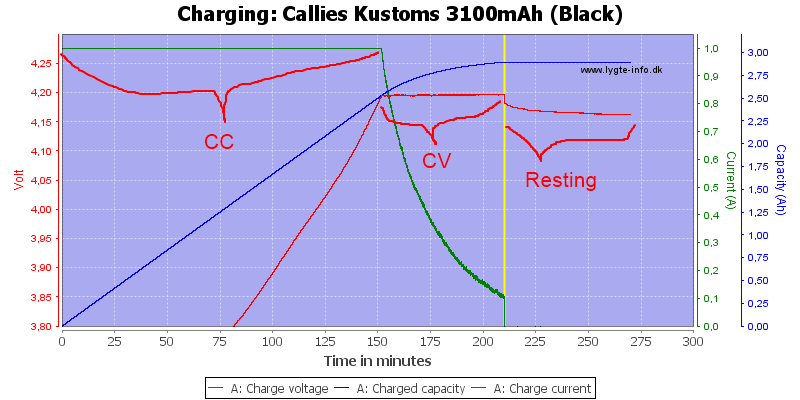HKJ
Flashaholic
[size=+3]Charger Soshine SC-S7[/size]
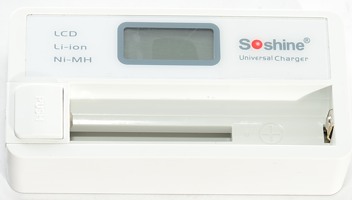
This is a smart charger that can handle both LiIon and NiMH batteries, it can charge one battery at a time and is rated for a 1A charge current.
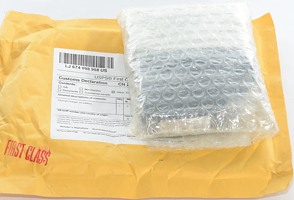
I did not get the charger in a full retail package, but instead in a envelope.
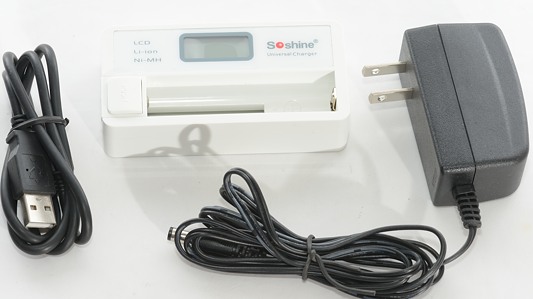
The envelope contained the charger, a universal voltage (100-240V 50/60Hz) mains power supply and a usb cable.
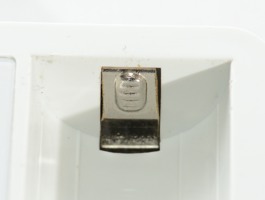
The plus connection is slightly raised, this means that the charger can be used with flat top batteries.
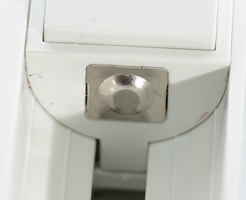
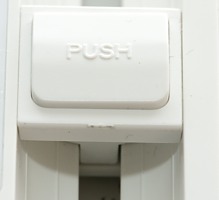
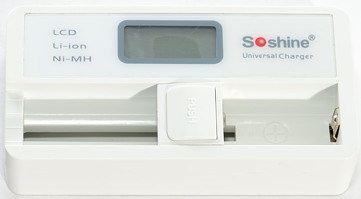
The minus connection is a slider that can be manually moved . This gives a span from 26 mm to 70 mm long batteries.
I would have liked a spring in one of the ends, this would have made the adjustment easier.
The negative end can be used as a spring, but then it must be moved in, before the battery is placed in the charger.
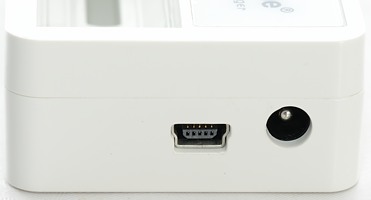
Power can be supplied from a 12 vold adapter or from a usb power supply, in both cases it requires a 1A power supply.
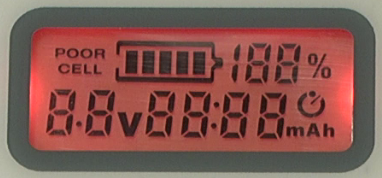
Instead of the typical red/green leds, this charger uses a display to show status information on.
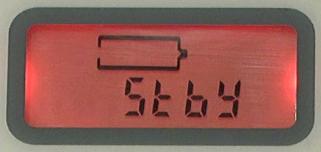
When no battery is in the charger it shows this standby display. There is a faint clicking sound from the charger in this mode.
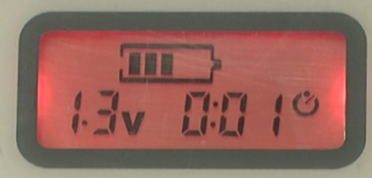
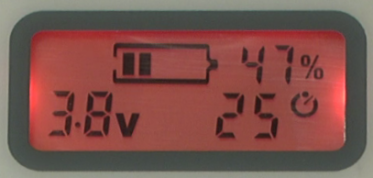
While charging it shows the voltage and the time used, with LiIon it will also show an estimate of how many percent capacity is charged into the battery.
The voltmeter has some limitations, for LiIon it will not show below 3.3 volt or above 4.2 volt, it will stay at these voltages.
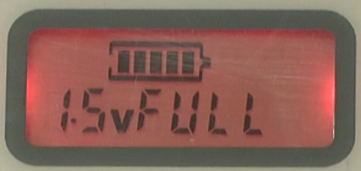
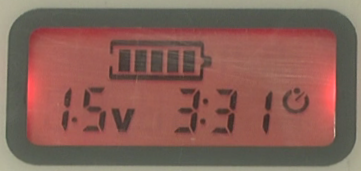
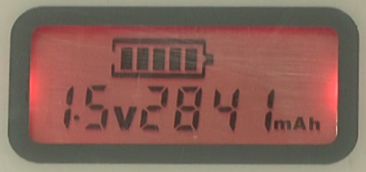
When done the display will show a battery full message, then show the time used and the capacity charged into the battery, these 3 displays will cycle. The capacity is not a precision measurement, but good enough to compare LiIon batteries and see when it is time to replace a battery (Remember the battery must be empty to measure the capacity).
For NiMH the value will be way above the battery capacity, these batteries need some extra current when being charged.

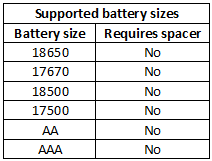
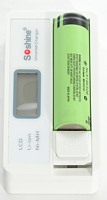
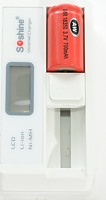
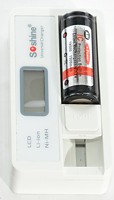
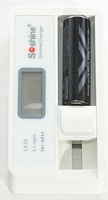
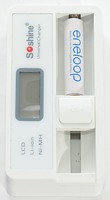
The charger can handle 70 mm long batteries including flat top cells.
[size=+2]Measurements[/size]
Below 0.7 volt the charger reports standby and is pulsing 130mA current to test for a battery, this will also reset a protected battery.
Between 0.7 volt and 2.3 volt the charger assumes it is a NiMH battery.
Above 2.3 volt the charger will assume LiIon.
When a battery is put into the charger it will start with about 300mA and after some time switch to full charge current.
When charger is disconnected from power, but with a battery in, it will discharge with 2 mA from a NiMH and 7mA from a LiIon.
When the charge current goes below the termination current the charging is stopped and it will discharge with 2 mA from a NiMH and 10mA from a LiIon, but due to pulsing the battery will stay charged.
The charge will always restart charging when a battery is put into it or after a power loss and for NiMH it might charge a significant amount of current.

The first test is with a 18650 battery, the charger does a CC/CV charge profile, but when it report battery full (At the yellow line) it starts doing some very strange pulses.
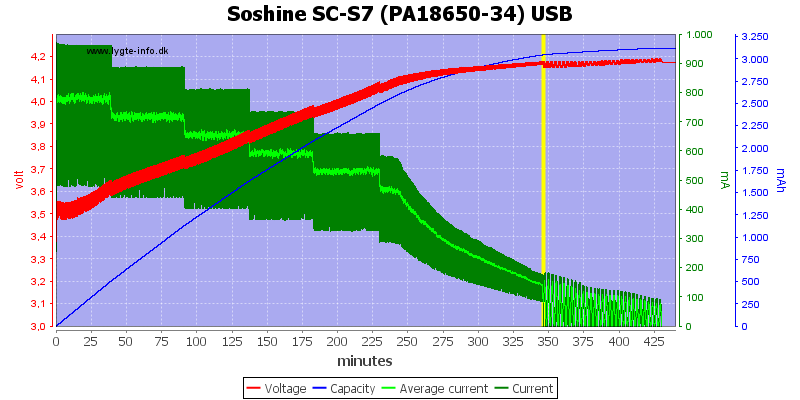
Same battery, this time with usb power. The charger starts at full current, but reduces the current during charge, maybe because it cannot supply full current with the lower voltage difference between battery and usb voltage?
It does look like the pulses stops after some time. The pulses will not damage the battery, but the battery will be charged slightly higher.
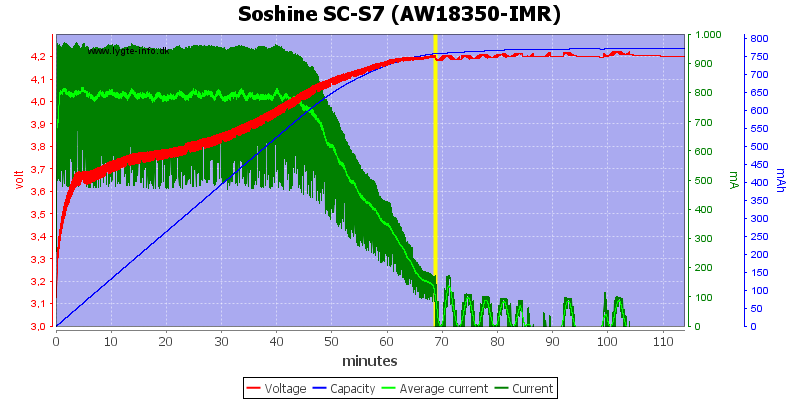
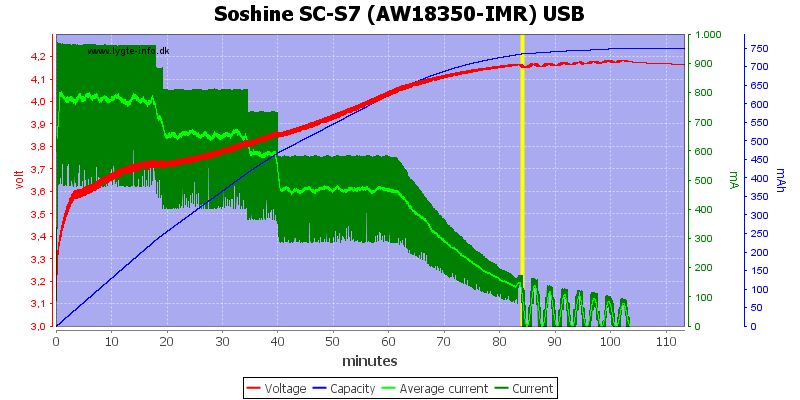
A smaller LiIon battery works exactly like the 18650 I tried first.
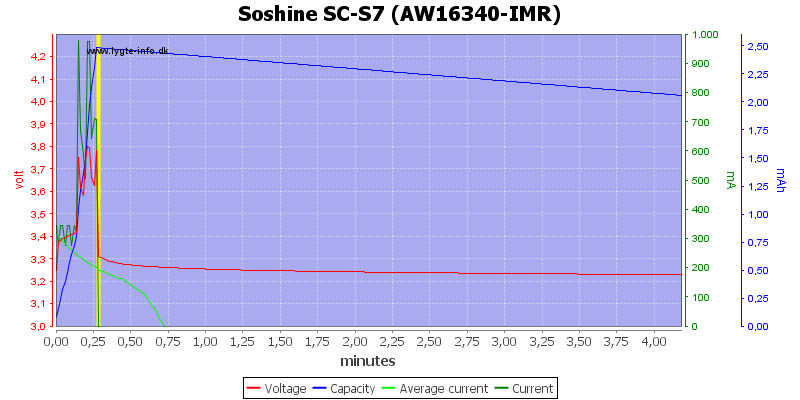
My old IMR cell, did not work as expected, after a short time the "Poor cell" text turned on and it showed "FAIL" on the display. The charger has a point about the cell.
I have also seen the charger only show "Poor cell", but continue to charge.
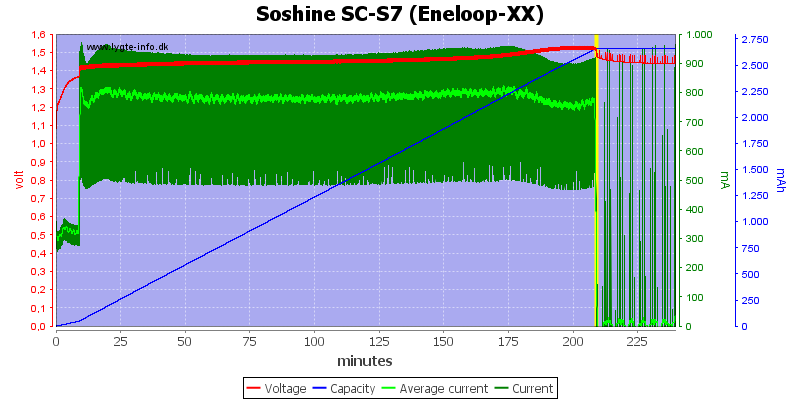
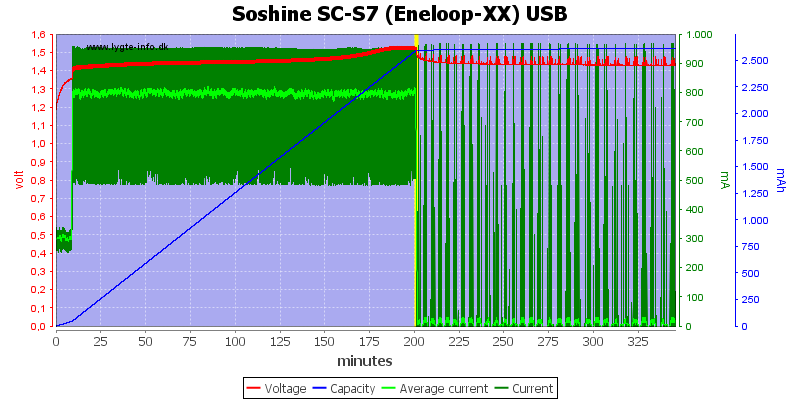
When charging NiMH the 300mA current on for much longer time, than when charging LiIon and this makes it visible in the charts (My guess is that this current is used to detect a LiIon battery with). The charge current is the same on 12 volt and usb power.
This charger might use -dv/dt terminations for NiMH.
The charger also has the pulsing after the charge is terminated and it does not look like it will stop, this is perfectly fine for a NiMH battery.

This is the charge current, just after a NiMH battery is put into the charger, it is pulsing with 300mA current.

After some time (about 10 minutes) it switches to the full 1A charge current, but still pulsing. During the low part of the pulse it is discharging the battery (The red curve is below the 0.0 line)

This is the charge current, just after a LiIon battery is put into the charger, it is pulsing with 300mA current, it will after a few seconds change to the full current.

Full charge current into a LiIon battery. This does not do any discharge in the pulses.

The LiIon battery is full and the charger is pulsing and also doing a weak discharge in between the pulses. The average will continue to charge the battery. Note: I have changed scale.
[size=+2]Conclusion[/size]
The charger has many interesting features: Charges both LiIon and NiMH, shows charged capacity, detect bad batteries, shows charge state for LiIon.
But all these features are only interesting, if the charger does a good job. It looks like it does a good job on NiMH and an acceptable job on LiIon, but I am not impressed with the pulsing when the charge is supposed to be finished. The discharge of a few mA is not really significant, except if leaving the batteries in the charger for days.
[size=+3]Notes[/size]
The charger was supplied by illuminationGear.com for a review.
Here is an explanation on how I did the above charge curves: How do I test a charger

This is a smart charger that can handle both LiIon and NiMH batteries, it can charge one battery at a time and is rated for a 1A charge current.

I did not get the charger in a full retail package, but instead in a envelope.

The envelope contained the charger, a universal voltage (100-240V 50/60Hz) mains power supply and a usb cable.

The plus connection is slightly raised, this means that the charger can be used with flat top batteries.



The minus connection is a slider that can be manually moved . This gives a span from 26 mm to 70 mm long batteries.
I would have liked a spring in one of the ends, this would have made the adjustment easier.
The negative end can be used as a spring, but then it must be moved in, before the battery is placed in the charger.

Power can be supplied from a 12 vold adapter or from a usb power supply, in both cases it requires a 1A power supply.

Instead of the typical red/green leds, this charger uses a display to show status information on.

When no battery is in the charger it shows this standby display. There is a faint clicking sound from the charger in this mode.


While charging it shows the voltage and the time used, with LiIon it will also show an estimate of how many percent capacity is charged into the battery.
The voltmeter has some limitations, for LiIon it will not show below 3.3 volt or above 4.2 volt, it will stay at these voltages.



When done the display will show a battery full message, then show the time used and the capacity charged into the battery, these 3 displays will cycle. The capacity is not a precision measurement, but good enough to compare LiIon batteries and see when it is time to replace a battery (Remember the battery must be empty to measure the capacity).
For NiMH the value will be way above the battery capacity, these batteries need some extra current when being charged.







The charger can handle 70 mm long batteries including flat top cells.
[size=+2]Measurements[/size]
Below 0.7 volt the charger reports standby and is pulsing 130mA current to test for a battery, this will also reset a protected battery.
Between 0.7 volt and 2.3 volt the charger assumes it is a NiMH battery.
Above 2.3 volt the charger will assume LiIon.
When a battery is put into the charger it will start with about 300mA and after some time switch to full charge current.
When charger is disconnected from power, but with a battery in, it will discharge with 2 mA from a NiMH and 7mA from a LiIon.
When the charge current goes below the termination current the charging is stopped and it will discharge with 2 mA from a NiMH and 10mA from a LiIon, but due to pulsing the battery will stay charged.
The charge will always restart charging when a battery is put into it or after a power loss and for NiMH it might charge a significant amount of current.

The first test is with a 18650 battery, the charger does a CC/CV charge profile, but when it report battery full (At the yellow line) it starts doing some very strange pulses.

Same battery, this time with usb power. The charger starts at full current, but reduces the current during charge, maybe because it cannot supply full current with the lower voltage difference between battery and usb voltage?
It does look like the pulses stops after some time. The pulses will not damage the battery, but the battery will be charged slightly higher.


A smaller LiIon battery works exactly like the 18650 I tried first.

My old IMR cell, did not work as expected, after a short time the "Poor cell" text turned on and it showed "FAIL" on the display. The charger has a point about the cell.
I have also seen the charger only show "Poor cell", but continue to charge.


When charging NiMH the 300mA current on for much longer time, than when charging LiIon and this makes it visible in the charts (My guess is that this current is used to detect a LiIon battery with). The charge current is the same on 12 volt and usb power.
This charger might use -dv/dt terminations for NiMH.
The charger also has the pulsing after the charge is terminated and it does not look like it will stop, this is perfectly fine for a NiMH battery.

This is the charge current, just after a NiMH battery is put into the charger, it is pulsing with 300mA current.

After some time (about 10 minutes) it switches to the full 1A charge current, but still pulsing. During the low part of the pulse it is discharging the battery (The red curve is below the 0.0 line)

This is the charge current, just after a LiIon battery is put into the charger, it is pulsing with 300mA current, it will after a few seconds change to the full current.

Full charge current into a LiIon battery. This does not do any discharge in the pulses.

The LiIon battery is full and the charger is pulsing and also doing a weak discharge in between the pulses. The average will continue to charge the battery. Note: I have changed scale.
[size=+2]Conclusion[/size]
The charger has many interesting features: Charges both LiIon and NiMH, shows charged capacity, detect bad batteries, shows charge state for LiIon.
But all these features are only interesting, if the charger does a good job. It looks like it does a good job on NiMH and an acceptable job on LiIon, but I am not impressed with the pulsing when the charge is supposed to be finished. The discharge of a few mA is not really significant, except if leaving the batteries in the charger for days.
[size=+3]Notes[/size]
The charger was supplied by illuminationGear.com for a review.
Here is an explanation on how I did the above charge curves: How do I test a charger


